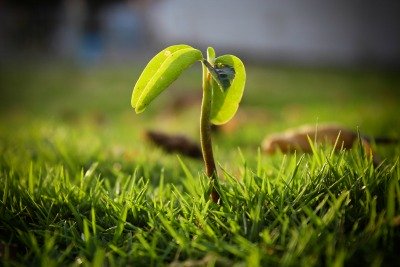In agriculture, the term plant growth and development is often substituted with crop growth and yield.
This is so because plant agriculture is mainly concerned with crops and their economic products.
Indeed, a farmer may be concerned only with his corn crop and its grain yield.
He may not consider other plants except the weeds which can have adverse effects on productivity.
But the study of the science of crop production, or crop science, is not limited only to existing agricultural crops.
For one, plants that may not appear useful now can be found useful later.
For example, the discovery of the sugar beet as a commercial source of sugar is relatively recent compared to sugar cane.
Further, the cellular, chemical, and biophysical changes occurring during plant development and their control similarly apply to most plants.
Plant Development vs. Plant Growth vs. Differentiation
By way of introduction to various related pages, this page distinguishes plant growth, differentiation, and development.

Plant development is an overall term that refers to the various changes that occur in a plant during its life cycle.
In consideration of various horticultural crops and products, Watada et al. (1984) proposed the following definition of development: “the series of processes from the initiation of growth to death of a plant or plant part.”
However, being cyclical, the beginning can be anywhere.
Nonetheless, in this paper, we will consider some of the events from seed germination to the seedling stage, vegetative growth, maturation, flowering, fruit and seed formation, and senescence.
This is a work in progress.
The development consists of both growth and differentiation involving quantitative and qualitative changes (Hopkins 1999).
It is characterized by changes in size, shape, form, degree of differentiation, and state of complexity (Abellanosa and Pava 1987).
However, there can be growth without differentiation and likewise, there can be differentiation without growth.
Plant growth is the irreversible, quantitative increase in size, mass, and/or volume of a plant or its parts.
It occurs with an expenditure of metabolic energy.
Therefore, the events leading to leaf formation and the increase in height of a plant are growth, but the increase in the volume of seed due to uptake of water or imbibition is not growth.
There are various ways of quantifying plant growth.
These include cell number, fresh weight, dry weight, plant height, length, width, area, and volume. Each one has limitations.
Growth is in general a combined effect of cell division and cell enlargement.
But in some instances, growth can occur even without cell division and the reverse is also true.
Likewise, the early growth of the embryo in the flower can be quantified by the increase in cell number although these cells being small do not increase the size of the embryo.
The fresh weight of a plant may also change depending on its moisture content.
Plant moisture in turn may be affected by the availability of soil water and changes in climatic factors which can alter water content due to differential water absorption and water loss.
On the other hand, dry weight can be an unreliable measure of seedling growth in the dark (Hopkins 1999).
Under darkness, the seedling will lose dry matter because its stored carbon is respired.
Deprived of light, the plant will not be able to photosynthesize to replenish the lost carbon.
Differentiation involves a series of qualitative changes occurring in plants.
It is an orderly process of change in which structurally simple and genetically identical cells become different by becoming specialized for certain functions and producing the various tissues and organs of a plant.
The shift into specialized cells occurs due to differential activation of a cell’s genome (Moore et al. 2003).
There is differentiation as the fertilized egg in the embryo sac undergoes cell division to produce two daughter cells which further divide to form the radicle and the epicotyl of the seed embryo.
At the tip of stems are undifferentiated meristematic cells which continue to divide to produce more stems.
But at certain times, they specialize to produce leaves or flowers.
Further, most highly differentiated or specialized cells can be made to dedifferentiate, that is, they can revert to a more embryonic state.
By employing tissue culture techniques, tiny segments of pith from the center of the tobacco stem can be induced to form an undifferentiated mass of cells called callus which will subsequently redifferentiate to give rise to new plants.
The same is true for the secondary phloem cells from the storage root of carrot, that underground organ that is cooked as a vegetable.
The ability of these live cells to regenerate parts of an organism is called totipotency.
REFERENCES
ABELLANOSA AL, PAVA HM. 1987. An Introduction to Crop Science. CMU, Musuan, Bukidnon: Publications Office. 245 p.
HOPKINS WG. 1999. Introduction to Plant Physiology. 2nd ed. New York, NY: ohn Wiley & Sons, Inc. 512 p.
MOORE R, CLARK WD, VODOPICH DS. 2003. Botany. 2nd ed. Boston, Massachusetts: McGraw-Hill. 919 p.
WATADA AE, HERNER RC, KADER AA, ROMANI RJ, and GL STABY. 1984. Terminology for the description of developmental stages of horticultural crops. HortScience. 19(1):20-21. Retrieved from http://ucanr.edu/datastoreFiles/234-426.PDF.
